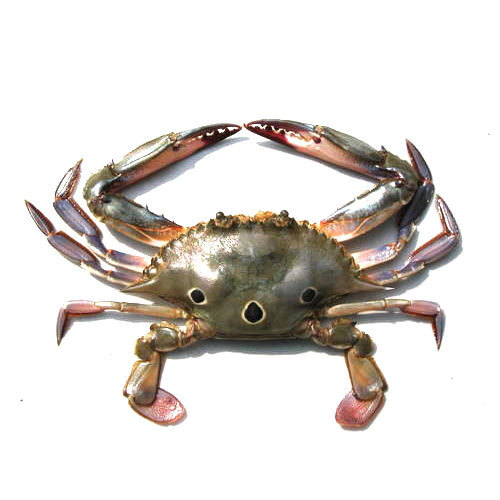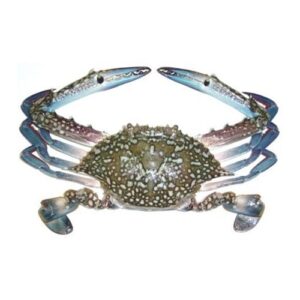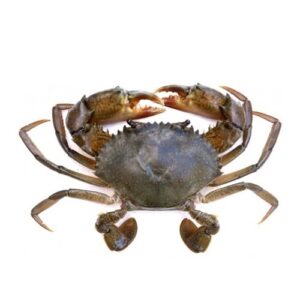Introduction
Fresh Three Spot Crab, also known as the three-spot swimming crab, is another commercially prized species of locally available crabs. Like three-spot crabs, they are also powerful swimmers, voracious hunters, and scavengers. Fresh three spot crab are not very abundant in the Arabian sea and have an uncertain supply and demand curve. The Local availability can be affected tending to increase in international exports to China, Japan, Malaysian, & Thailand.
Flavor Profile
The three-spot crab has a rich, sweet, strong flavor. Although they are not very meaty, the meat is one of a treat to have.
Nomenclature
- English Name: Three-spot crab, Three-Spot Swimming Crab
- Local Name: Kekra, Tikkari, Tikki Kekra, Kukri
- Scientific Name: Portunus sanguinolentus
Habitat
Three-spot crabs are normally found in sandy and sandy-muddy regions.
Catching Method
three-spot crabs are caught using gillnets, and bottom trawls.
Physical Attributes
The carapace is finely granulose and regions are just discernible. It has nine teeth on each anterolateral margin and the last tooth is larger than the preceding teeth. The chelae are elongated in males as compared to females. The larger chela with the conical tooth is present at the base of fingers. The pollex is ridged.
Appearance
Three-spot crabs are olive to dark green in color. They have 3 prominent maroons to red spots on the posterior of the carapace.
Size
On average, three-spot crabs are 100 to 200 grams in weight, However other sizes are also occasionally available.
Peeling Preferences
three-spot crabs are preferred to be used as Whole
Approx. Peeling Yields
- Whole: 100 %
- Claws and legs removed: 70 %
- Shell Removed: 35 %
- Meat only: 15 %
Cooking Preferences
Three-spot crab is preferred to Grill, BBQ, and to be used in soups and broths.
Health Benefits
- Heart friendly
- Lowers Blood Pressure
- Improves Immune System
- Strengthens the bones.
- Improves Skin and Hair health





There are no reviews yet.